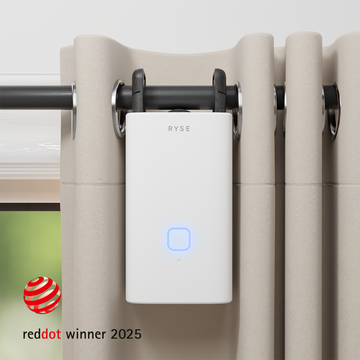Stress is one of the most pervasive hurdles to good sleep. You crawl into bed hoping for relief, but your thoughts race, your muscles stay tense, and your body never fully relaxes, making restorative sleep a distant goal. But here’s the good news: by carefully shaping your environment, you can send powerful signals to your nervous system that it’s time to unwind.
In this guide, you’ll discover how stress disrupts your sleep, and explore smart, actionable strategies, grounded in both science and tech to reclaim calm, build resilience, and finally drift into rest.
1. The Science Behind Stress and Sleep
When you experience stress whether from work pressure, life events, or emotional overwhelm. Your brain activates the hypothalamic-pituitary-adrenal (HPA) axis. This triggers a cascade of responses:
- Cortisol and adrenaline levels rise, keeping your body in “alert mode.”
- Melatonin production is suppressed, making it harder to feel sleepy.
- Your heart rate increases, muscles stay tense, and your mind becomes more active.
In short: your system is signaling wake, even when your desire is to rest.
Research shows that chronic stress correlates strongly with poorer sleep quality, insomnia, and fragmented patterns.
The key to shifting this pattern? Creating external cues that help your brain transition from fight-or-flight into rest-and-repair.
2. Why Environment Matters More Than You Think
Your brain is constantly scanning your surroundings for safety signals. When the room is dim, quiet, or cool it registers that as “safe time.” But when lights are bright, noise is jarring, or heat lingers, your nervous system can remain on edge even if you're exhausted.
You might feel mentally drained, but your body doesn’t “switch off” if the environment keeps triggering alertness. Smart technologies let you outsource much of that environmental control, reducing the internal load on your nervous system. Here’s how:
Light: The Most Powerful Sleep Regulator
Your circadian rhythm (internal body clock) is deeply responsive to light. Evening exposure to blue or intense light signals to your brain that it’s still daytime, delaying the sleep process. Even minimal ambient light from streetlamps, screens, or LEDs can interfere with melatonin production. Smart Strategy:
- Use RYSE SmartShades / SmartCurtains to fully darken your room in the evening. Automate them to close as the sun sets, and open gradually in the morning for a gentle wake.
- Schedule your shades to block light starting 1 hour before bedtime, giving your system time to downshift.
- Avoid screens or use warm, dim lighting in the final hour before bed.
By reducing light “noise,” your brain receives a clearer signal: it’s time to rest.
Sound: Masking Disruptions, Enhancing Calm
Sudden noises or unpredictable sounds (cars, neighbors, appliances) can continuously interrupt your brain’s attempt to “let go” and drift into sleep. These micro-awakenings may not fully wake you but can fracture deeper sleep cycles.
Smart Strategy:
- Use white noise machines, rain or nature sound playlists, or ambient sounds through smart speakers.
- Mask disruptive noises proactively rather than reacting to them.
-
Pair sound masking with your light control setup to create an immersive, low-disturbance environment.
A steady, predictable auditory backdrop helps your brain relax its “threat scanning” mode and drift into deeper states.
Temperature: The Silent Sleep Saboteur
Your core body temperature must drop slightly for sleep onset. If your room is too hot or fluctuates, it delays that descent. Ambient heat has been shown to shorten sleep onset and reduce overall rest, particularly in warmer climates.
Smart Strategy:
- Aim for 60–67°F (15–19°C) in your bedroom.
- Use a smart thermostat to begin pre-cooling 30–60 minutes before sleep.
- Use automated blinds (like RYSE) to block late-day solar gain and heat.
- Avoid heavy bedding or heavy pajamas that trap heat.
By keeping your sleeping environment thermally stable, you help your body complete the natural winding-down process.
Automation = Less Mental Load
When you're stressed, making decisions, even small ones — can feel overwhelming. That’s where automation shines. Instead of remembering to adjust blinds, lights, and sounds every night, set up a “Goodnight” routine that does it for you.
Smart Strategy:
-
Program a voice or app command that:
-
Dims lights
-
Closes blinds
-
Starts a calm sound
-
Turns on fan or adjusts thermostat
-
- Let this consistent nightly trigger become a cue your brain associates with rest.
- Over time, the predictability itself becomes reassuring and lowers mental friction.
Bonus Tips: Habits That Support Smart Environments
To maximize the impact of your smart setup, combine with supportive behaviors:
- Avoid screens in the last 60 minutes before bed.
- Perform deep breathing, gentle stretching, or journaling to offload mental clutter.
- Keep your bedroom tidy and minimalist, visual calm helps mental calm.
- Limit large meals, stimulants, or intense exercise close to bedtime.
Together, these amplify the signals your smart environment sends to your brain.
You cannot erase stress entirely, but you can design your sleep environment to counteract its disruptive effects. With the right blend of thoughtful automation and consistent habits, you give your nervous system the cues it needs to switch from tension to rest.
Smart solutions like RYSE SmartShades & SmartCurtains act as silent assistants, adjusting light and heat when you can’t. so your bedroom becomes a refuge rather than a battleground. Over time, your brain will learn the rhythm, and even on stressful nights, rest becomes possible again.







